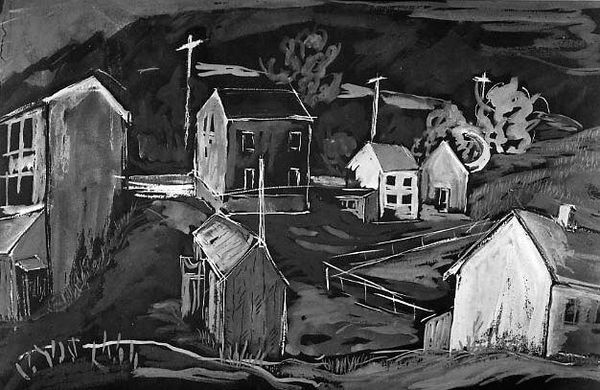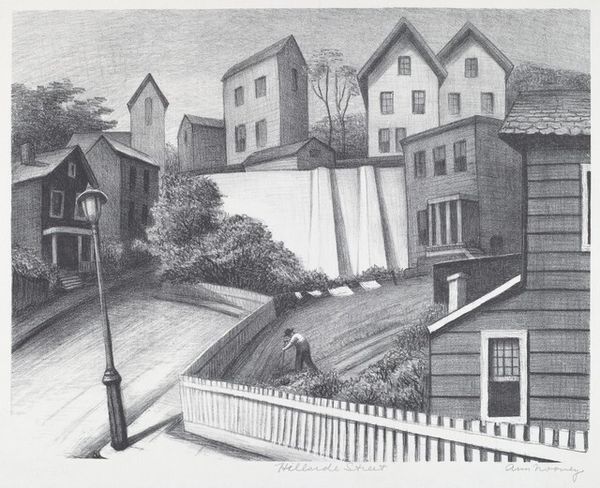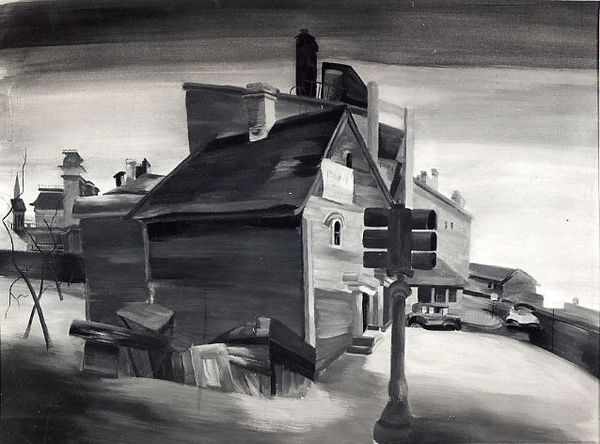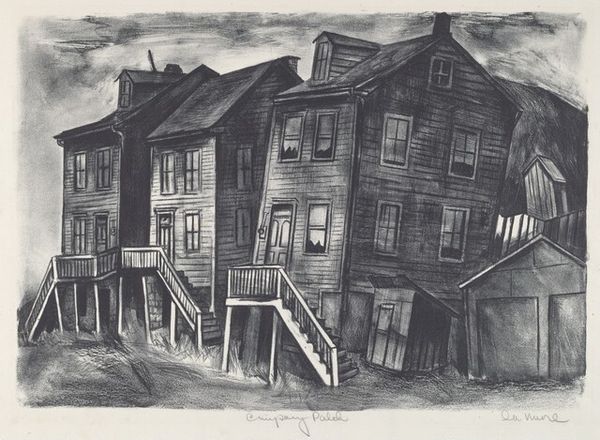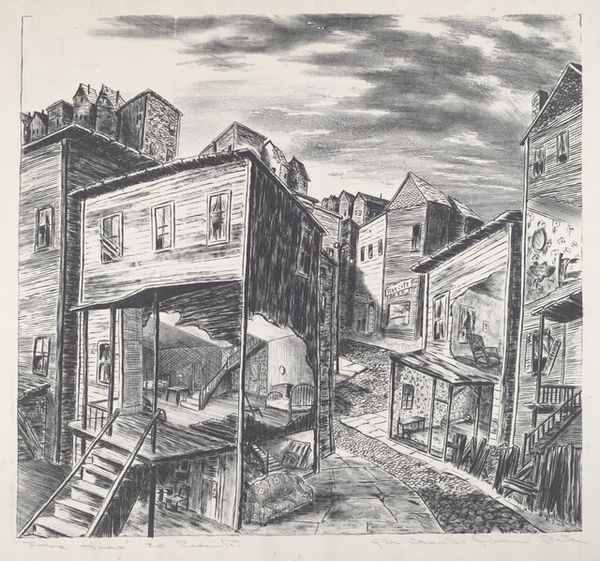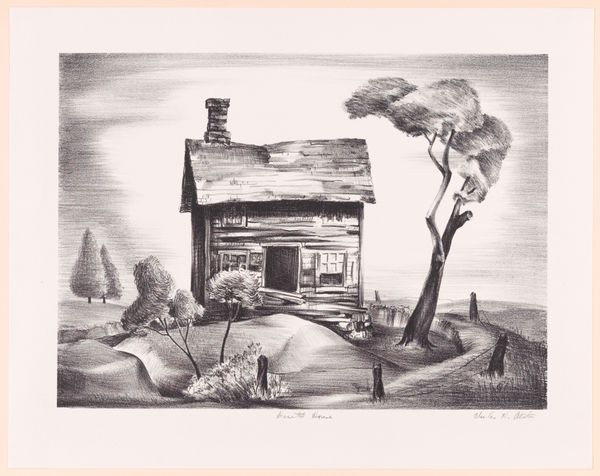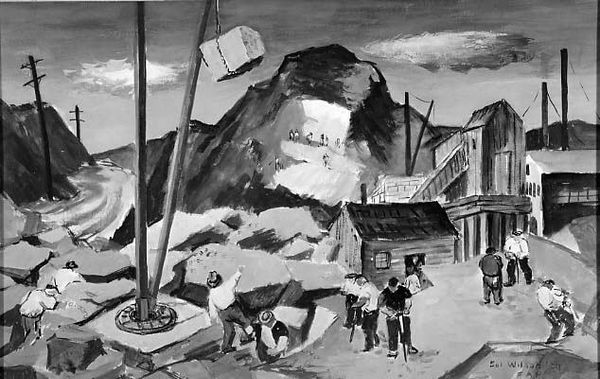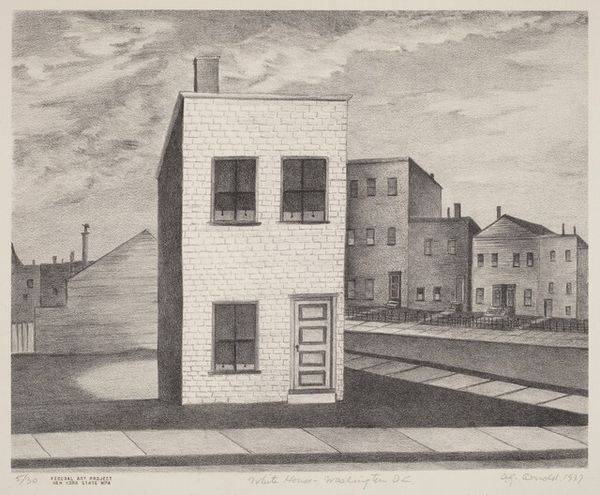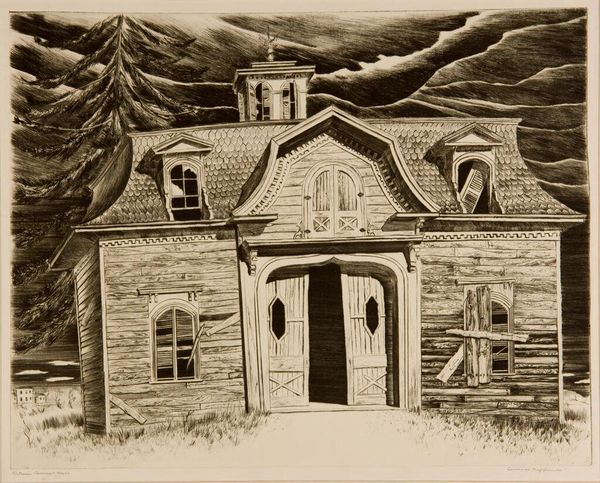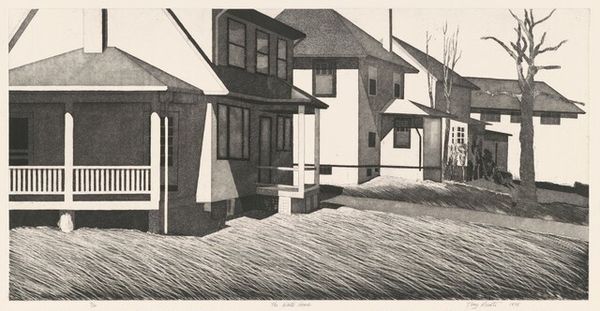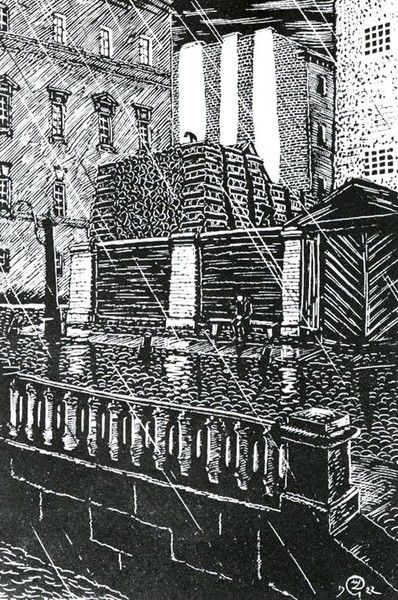
Dimensions: 19 1/4 × 24 1/8 in. (48.9 × 61.3 cm)
Copyright: Public Domain
Curator: Immediately striking; there is an architectural coolness that borders on melancholy, perhaps exacerbated by the limited tonal range. Editor: I find the scene equally evocative. This is Thomas Flavell’s "Atlantic and Pacific" completed in 1940, and displayed here, at the Met. He worked in drawing, to achieve this realist style. What draws you to it? Curator: Its composition is deceptively simple. We see a corner building, likely a store, rendered with sharp lines and precise geometric forms. The perspective feels slightly skewed, adding to this sense of unease I mentioned earlier. The flatness almost reminds one of Analytical Cubism and the picture plane; an intriguing synthesis of urban and landscape aesthetics. Editor: Agreed. During the period, we must remember, urban landscapes, especially depictions of commercial spaces, became prevalent in American art, reflecting rapid industrialization and consumer culture. Notice how Flavell emphasizes the name "Atlantic and Pacific," it connects to themes of commerce and global trade routes, particularly important to the historical discourse of pre-war New York. Curator: Precisely, yet there's something isolating in this scene. Despite the suggestion of commerce, there’s a distinct lack of human presence; that is crucial to me as an indicator of intention, a statement if you will. This abstraction serves to depersonalize the space. It brings out a question: Is the commercialism oppressive? Editor: Well, the absence of people could also signal the anxieties of the Depression era, which, as context, significantly affected American life in 1940. The title suggests a business trying to appear ubiquitous and connected; trying to reach across continents in its messaging to clients. And that façade that conceals an everyday business, using the style of drawing with high-contrast adds another layer of artifice. Curator: Ultimately, it presents a visually stimulating paradox. A realist cityscape drawing is reduced to almost abstraction by the artist's own structural design, and lack of humanity, allowing viewers a lens of inquiry, into their own subjectivity, rather than a definite understanding of history. Editor: Indeed. Flavell gives us not just a visual record, but a socio-economic snapshot; one we can still glean interpretations from, today.
Comments
No comments
Be the first to comment and join the conversation on the ultimate creative platform.
